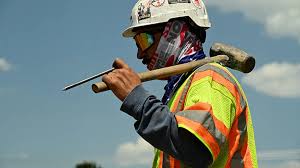
Fluor Corp.’s pipeline of projects is taking a major hit as trade tensions and economic uncertainty prompt clients to pump the brakes. The global contractor’s CEO Jim Breuer said on the company’s second quarter earnings call that more clients are “taking a wait-and-see approach” in response to shifting trade policies, escalating input costs and stubborn interest rates.

“Over the past couple of months, we’ve seen more clients continue to take a wait-and-see approach due to a variety of reasons, including ongoing trade policy discussions and developments, cost escalation and interest rates,” Breuer told analysts. “In a few cases, we’ve seen project cancellations or extended deferments.”
The mounting caution from clients is already showing up in Fluor’s numbers. Backlog fell to $28.2 billion in the second quarter, down 13% from the $32.3 billion reported last year. New awards also dropped sharply by 43% year-over-year to just $1.8 billion for the quarter, a signal that the slowdown could linger.
Investors reacted swiftly. The company’s stock price tumbled more than 27% in early Friday trading following the earnings release.
Adding to Fluor’s woes, legacy infrastructure jobs continue to drag down profits. The company’s Urban Solutions segment, which includes infrastructure, advanced manufacturing and life sciences, saw its profit plunge to $29 million this quarter, compared to $105 million a year ago. The losses are tied largely to cost overruns and execution issues on three major projects: the Gordie Howe International Bridge connecting Windsor, Ontario to Detroit, the LBJ 635 expansion, and I-35 Phase 2 in Dallas.
All three projects are now more than halfway built, but the company is still dealing with setbacks. Breuer said the Gordie Howe bridge is about 97% complete, LBJ 635 is at 78% and I-35 Phase 2 has reached 58%. Legal actions against underperforming subcontractors are underway.
“Whether it’s design errors by third parties or material escalation or labor challenges, we are addressing very aggressively these issues, and have taken actions both on the execution front and on the recovery from third parties,” said Breuer. “It is true that unfortunately, we are still experiencing some pain from projects.”
Fluor’s Energy Solutions segment was hit just as hard. Segment profit plummeted by about 80% to $15 million, down from $75 million a year ago, partly because of declining capital spending in the battery and chemicals markets and a costly $31 million arbitration ruling related to a fabrication job in Mexico from 2021.

“As far as the trade policy topic, it is having a significant impact on client sentiment and their willingness to make long term decisions, investment decisions,” Breuer explained. “What our clients are looking for is a little more stability and certainty around where that’s going to go.”
Yet despite the near-term headwinds, Fluor’s leadership remains optimistic about the future, especially as government incentives fuel domestic manufacturing and energy work. The company continues to progress on major semiconductor projects and is expanding in newer areas like rare earths mining in Wyoming and nuclear energy. It recently wrapped up two co-location data centers in India and sees nuclear as a growth opportunity, thanks to its stake in NuScale, a small modular reactor firm.
Breuer told investors, “We are at a point in the cycle of short term hesitation on our way to longer term opportunities. Specifically in the U.S., once the effects of the recently enacted pro-growth policies materialize, we expect clients to accelerate domestic investment in many of our end markets, such as manufacturing, semiconductors, data centers, power, mining, metals and national security.”
Fluor’s overall revenue for the quarter reached $4 billion, slipping about 6% from last year. Net earnings for Q2 jumped dramatically to $2.5 billion — up from $169 million — largely because of a $3.2 billion pre-tax gain from the company’s partial stake sale in NuScale.
But the backlog decline and tepid order book paint a challenging road ahead, analysts warn. “Results were tough with weak orders, charges and delays all peppering the report,” said Baird senior research analyst Andrew Wittmann in a note. “Ultimately, [partial NuScale] monetization was good … results were not.”
For now, all eyes are on whether the market stabilizes enough for clients to start greenlighting new work. Until then, the company’s fortunes rest on navigating legacy issues and capitalizing on pockets of opportunity in advanced energy and high-tech manufacturing.
Originally reported by Sebastian Obando in Construction Dive.